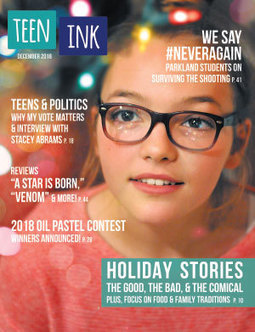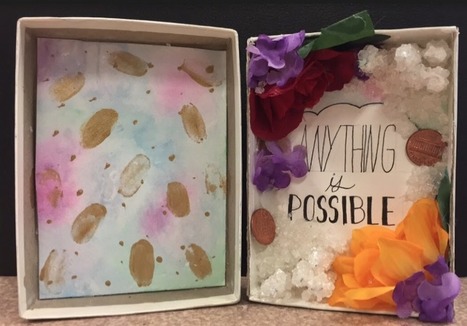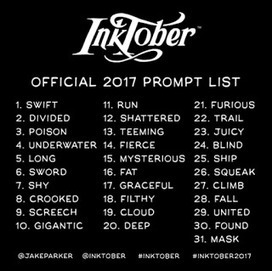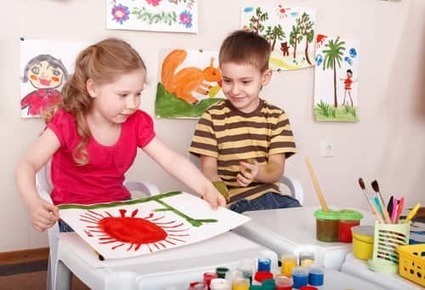 Your new post is loading...
 Your new post is loading...

|
Scooped by
John Evans
|
Art has often been relegated as an additional activity in schools. But schools that put art at the center of a child's learning experience through arts integration are seeing kids thrive.
5 Tips For Teaching With Art In Any Subject Area contributed by Nicola Giardina, TeachThought PD Facilitator Art inquiry is a powerful way to engage students with diverse learning needs, improve critical thinking and social-emotional skills and make learning relevant to students’ lives. Yet many teachers shy away from teaching with art, which causes their …
Via Tom D'Amico (@TDOttawa)
"There’s more room to make changes within the current education system than many people think. Schools operate as they do not because they have to but because they choose to. They don’t need to be that way; they can change and many do. Innovative schools everywhere are breaking the mold of convention to meet the best interests of their students, families, and communities. As well as great teachers, what they have in common is visionary leadership. They have principals who are willing to make the changes that are needed to promote the success of all their students, whatever their circumstances and talents. A creative principal with the right powers of leadership can take a failing school and turn it into a hot spot of innovation and inclusion that benefits everyone it touches.
"Take Orchard Gardens elementary school in Roxbury, Massachusetts. Ten years ago Orchard Gardens was in the doldrums. By most measures, it was one of the most troubled schools in the state. The school had five principals in its first seven years. Each fall, half the teachers did not return. Test scores were in the bottom 5 percent of all Massachusetts schools. The students were disaffected and unruly and there was a constant threat of violence. Students weren’t allowed to carry backpacks to school for fear that they might use them to conceal weapons, and there was an expensive staff of security guards, costing more than $250,000 a year, to make sure they didn’t. Remember, this was an elementary school."
Via Jim Lerman

|
Scooped by
John Evans
|
There’s more room to make changes within the current education system than many people think. Schools operate as they do not because they have to but because they choose to. They don’t need to be that way; they can change and many do. Innovative schools everywhere are breaking the mold of convention to meet the best interests of their students, families, and communities. As well as great teachers, what they have in common is visionary leadership. They have principals who are willing to make the changes that are needed to promote the success of all their students, whatever their circumstances and talents. A creative principal with the right powers of leadership can take a failing school and turn it into a hot spot of innovation and inclusion that benefits everyone it touches.

|
Scooped by
John Evans
|
Crayola has had a long-standing relationship with educators, providing quality products for the classroom and students’ home projects. A visit to Crayola is well worth the trip with artful lessons, classroom resources and the latest information regarding special programs and offers.

|
Scooped by
John Evans
|
"If you think about it, having a great time at the theater defies logic in many ways. We’re surrounded by strangers, bombarded with unusual images and often faced with a wordless language of symbols. Yet, on a good night, we generally laugh more, cry more and enjoy ourselves more at a live performance than when we’re watching TV at home. We may even lose ourselves and feel connected to something larger. How does this happen?
Some of the answers to art’s mysteries can be found in the realm of science. Art is considered the domain of the heart, but its transporting effects start in the brain, where intricate systems perceive and interpret it with dazzling speed. Using brain-imaging and other tools of neuroscience, the new field of neuroaesthetics is probing the relationship between art and the brain. "

|
Scooped by
John Evans
|
"Nature and humankind are both great artists, and when they join forces, amazing masterpieces can be produced. Today Bright Side has collected for you works in which the combined efforts of mother nature and photographic artists have captured magic moments showing the wondrous diversity of modern life and the natural world. Pictured above is the Westerdok District in Amsterdam." Tags: images, art, landscape, worldwide.
|

|
Scooped by
John Evans
|
Research around the way humans learn is booming these days. Consider viral brain-based teaching trends and explorations of how the act of teaching shapes kids’ brains.
Mariale Hardiman, vice dean of academic affairs at the Johns Hopkins School of Education and and director of Johns Hopkins’ Neuro-Education Initiative.
But studying how the brain learns doesn’t necessarily mean memorizing proteins and brain chemistry. Sometimes it’s about empathy—or in the case of some of the latest research coming out of Johns Hopkins, it’s about understanding how art plays a role in learning.
One person who has closely watched, and even shaped, the coevolution of neurosciences with education is Mariale Hardiman, vice dean of academic affairs at the Johns Hopkins School of Education. The education professor is also the co-founder and director of Johns Hopkins’ Neuro-Education Initiative, a center that aims to bring together research on learning and neuroscience, teaching and education.
EdSurge sat down with Hardiman recently to learn about the Initiative’ recent findings around how injecting art into lessons across disciplines can boost memory and retention. (This conversation has been lightly edited and condensed for clarity.)
Teen Ink, a national teen magazine, book series, and website devoted entirely to teenage writing, art, photos and forums. Students must be age 13-19 to participate, register and/or submit work. Distributed through classrooms by English teachers, Creative Writing teachers, Journalism teachers and art teachers around the country
Via Nik Peachey

|
Scooped by
John Evans
|
The benefits of art in a child’s education are widespread. Art can help kids express themselves and understand the world around them. Art is usually a hands-on experience and fun. For low-income students, studies have found that kids who have more arts education in school see long-term benefits by both academic and social standards.
Tori Wardrip, an art teacher at Lewis and Clark Middle School in Billings, Montana, wanted to explore the benefits of art more deeply while addressing some of the mental health issues she saw students experiencing.

|
Scooped by
John Evans
|
The benefits of art in a child’s education are widespread. Art can help kids express themselves and understand the world around them. Art is usually a hands-on experience and fun. For low-income students, studies have found that kids who have more arts education in school see long-term benefits by both academic and social standards.
Tori Wardrip, an art teacher at Lewis and Clark Middle School in Billings, Montana, wanted to explore the benefits of art more deeply while addressing some of the mental health issues she saw students experiencing.

|
Scooped by
John Evans
|
Art Teachers: This was made for y'all. Depending on where you are in your curriculum, pen-and-ink might not be the kind of exercise you'd do as a formal classroom assignment, but it could still be a great way to stretch your students. I know some artists who design a character (an alien? a pumpkin?) or pick a character to draw doing all of the #Inktober prompts. How would you have your alien doing "Swift?" "Squeak?" "Cloud?" "Mysterious?" ...or have them pick a favorite universe to draw in. Harry Potter, Star Wars, Adventure Time -- and have them still do the #Inktober prompts
Not-Art-Teachers: First of all, you should be. I should be. Finding ways to bring art into the classroom is a great way to engage kids who aren't engaged with some of our other go-to tools. But if you're so hooked on your curriculum that the #Inktober list of prompts seems like it would be inappropriate for what you're doing, come up with a list of 31 prompts that are within your curriculum. Connect it to the Bill of Rights. States of Matter. Digestive System. I don't know. Maybe look at the #Inktober list for inspiration, and then find a side door from those prompts into your own content. If 31 days seems excessive, just do it for one week -- see what your students come up with.

|
Scooped by
John Evans
|
With continued budget cuts, a greater focus on math and reading education, and an enduring emphasis on standardized testing, the future for art education in public schools around the U.S. may seem bleak. However, the growth of technology and software over the same period can provide educators with novel and inexpensive options for new art teaching methods.
From simple drawing apps to complex video-editing software, technological advancements can enable arts education for a fraction of the price of what it cost even 15 years ago. For resource-strapped public schools where art classes are the first thing on the chopping block, these technologies are key to providing the balanced education that most benefit students.

|
Scooped by
John Evans
|
"Nature and humankind are both great artists, and when they join forces, amazing masterpieces can be produced. Today Bright Side has collected for you works in which the combined efforts of mother nature and photographic artists have captured magic moments showing the wondrous diversity of modern life and the natural world. Pictured above is the Westerdok District in Amsterdam." Tags: images, art, landscape, worldwide.
|
 Your new post is loading...
Your new post is loading...
 Your new post is loading...
Your new post is loading...




























